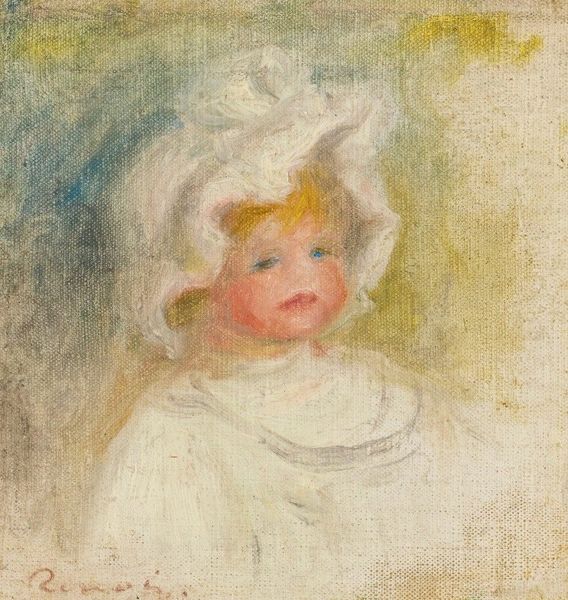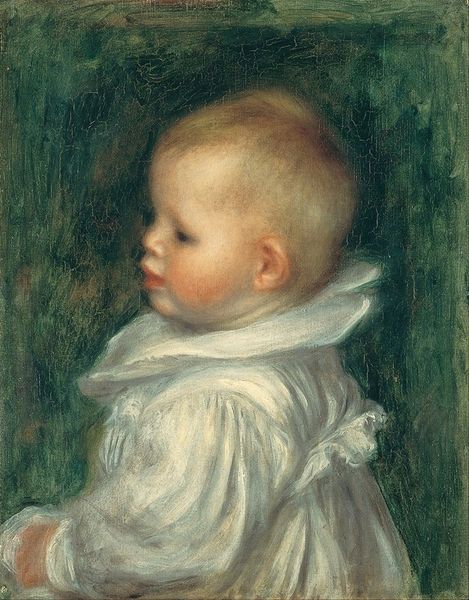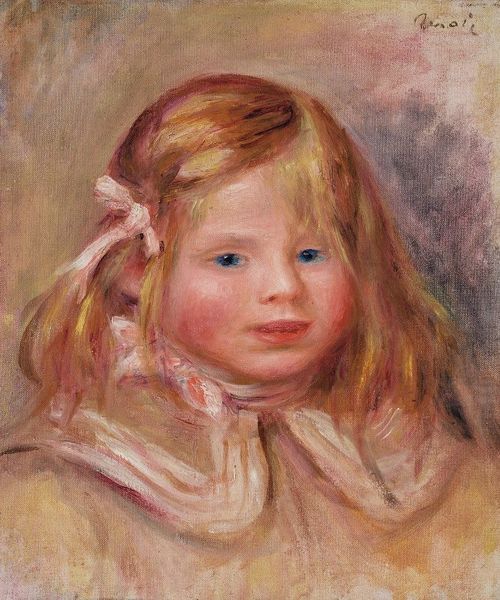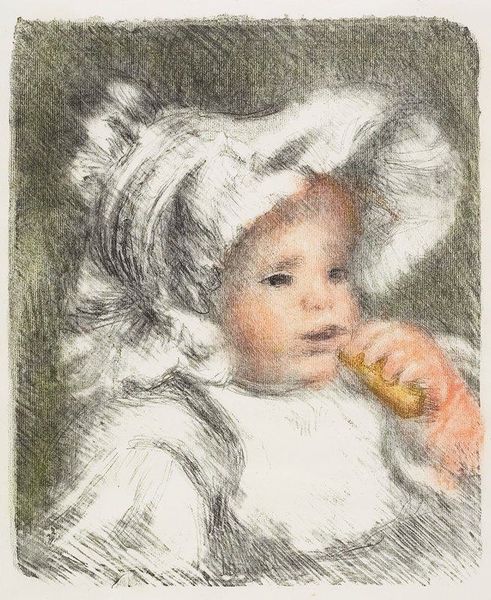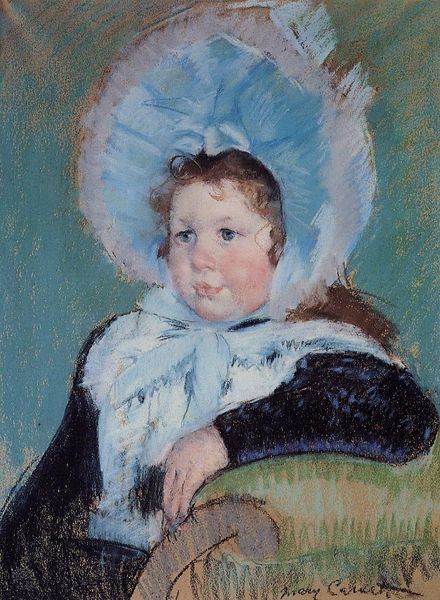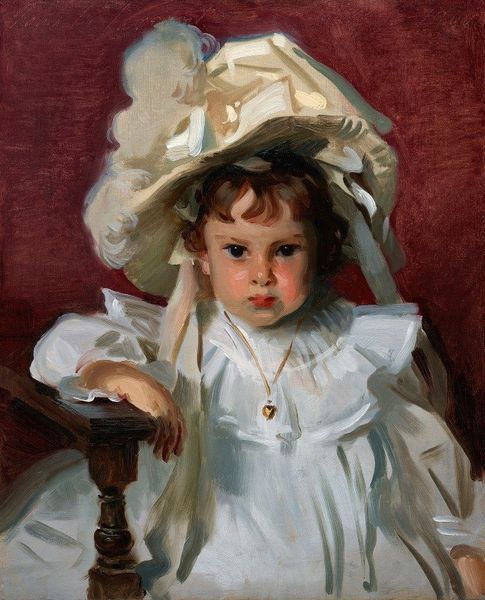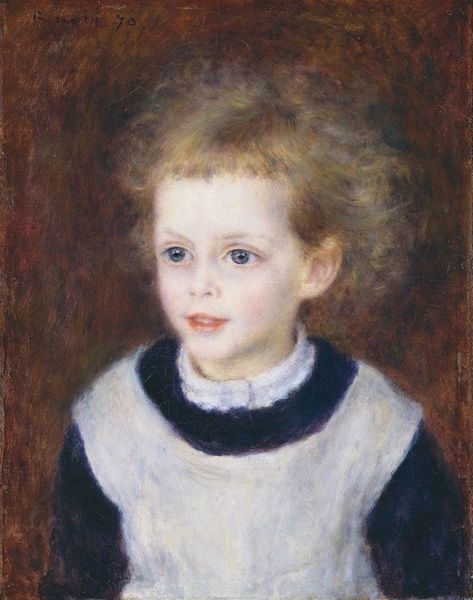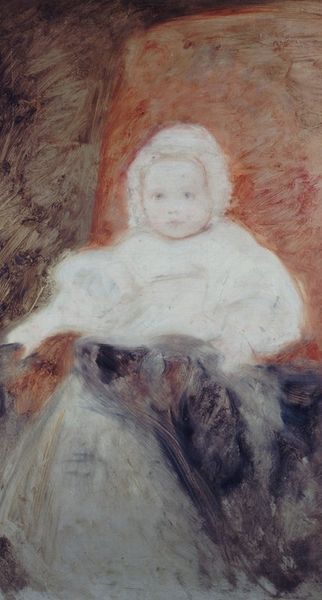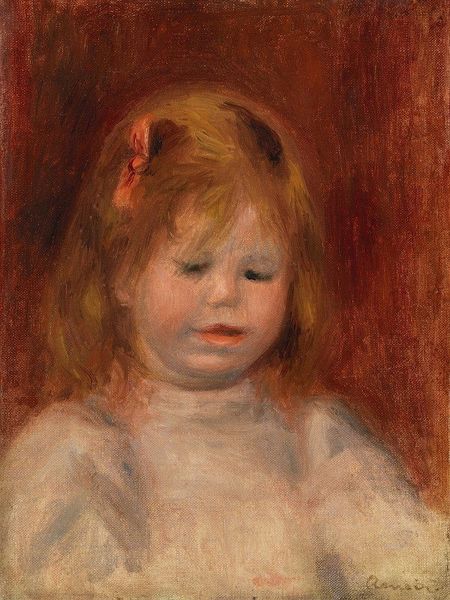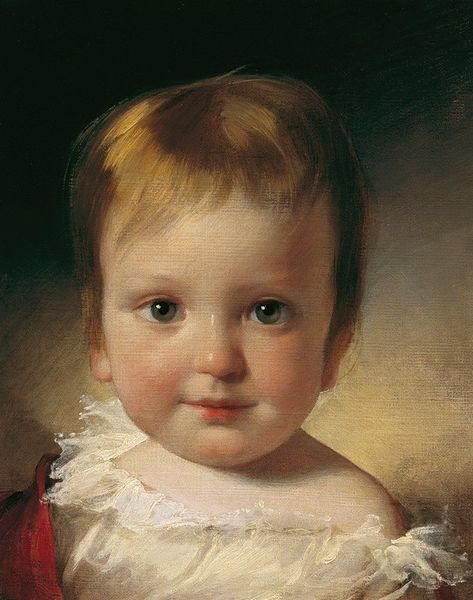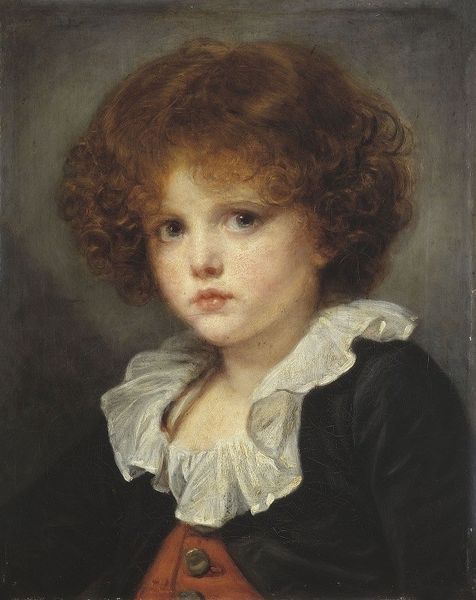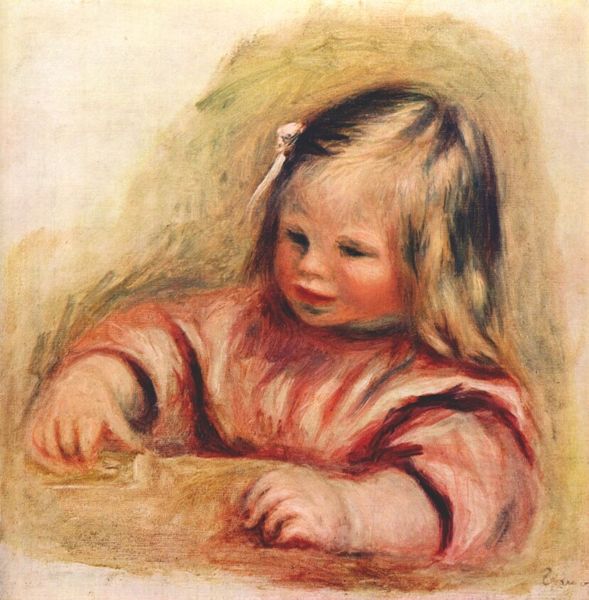
Copyright: Public domain
Pierre-Auguste Renoir painted this oil-on-canvas portrait of Claude, his son, during a time of significant social shifts in France. Looking at this image, it’s hard not to consider the politics of imagery, as Renoir presents a vision of idealized innocence. In late 19th century France, rapid industrialization and urbanization were reshaping society, and art often reflected anxieties about modernity, and childhood became a symbol of purity amidst societal change. Note the visual codes of the time: Claude, dressed in white, embodies innocence, untouched by the corruption of the adult world. This type of commissioned portraiture was part of an emerging art market, where artists like Renoir catered to the bourgeoisie’s desire to display their wealth and status. Understanding this work fully requires delving into the social and institutional contexts of late 19th century France, using archives and historical accounts to reveal the complex interplay of artistic expression, social values, and economic forces.
Comments
No comments
Be the first to comment and join the conversation on the ultimate creative platform.
